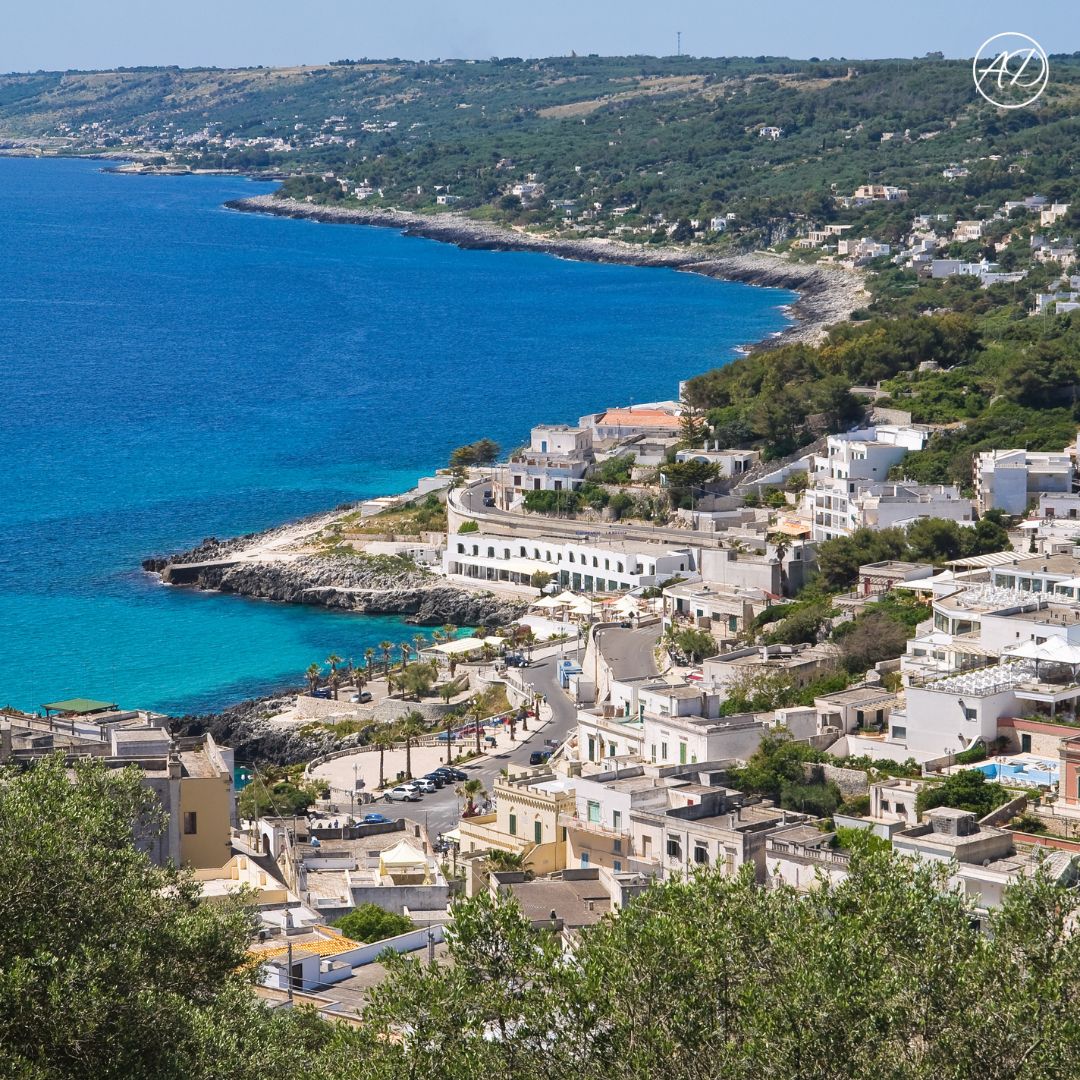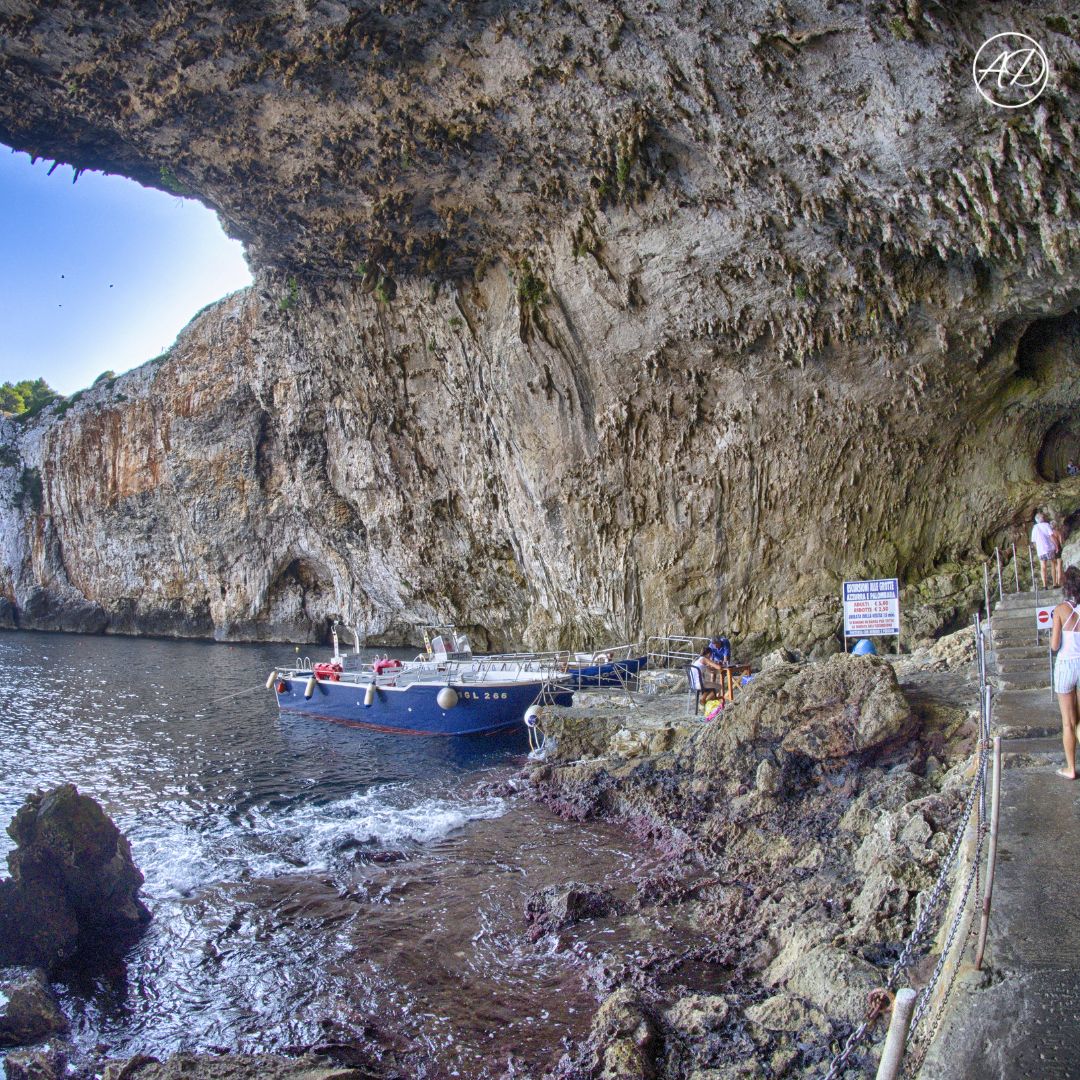Castro, known as the “Balcony on the Adriatic,” is a splendid town located in the province of Lecce, a jewel nestled in the heart of Salento. This wonderful locality majestically rises on a cliff overlooking the Adriatic Sea, offering breathtaking views that leave every visitor speechless. Only 48 km from Lecce, Castro represents a perfect balance between unspoiled nature, rich history, and fascinating legends, making it an ideal destination for those seeking a unique and incomparable tourist experience.
In addition to its rich history, Castro is renowned for its extraordinary natural beauty. The town is situated in a unique location where the crystal-clear blue of the Adriatic Sea blends with the lush greenery of the Mediterranean vegetation. The marina of Castro, awarded the prestigious Blue Flag, is a paradise for sea lovers, offering not only dreamy beaches but also a wide variety of water activities. From the convenient sea accesses, visitors can embark on marine adventures, exploring the spectacular caves that dot the coast, including the famous Romanelli Cave, one of the most important prehistoric sites in Italy.
 Castro is a destination that enchants and fascinates. Every corner of this town tells a story, every view offers an emotion. Whether it’s exploring its historic streets, diving into the crystal-clear waters of its sea, or listening to the ancient legends that pervade the village, Castro is a must-see for anyone wishing to discover the wonders of Salento in all their authenticity.
Castro is a destination that enchants and fascinates. Every corner of this town tells a story, every view offers an emotion. Whether it’s exploring its historic streets, diving into the crystal-clear waters of its sea, or listening to the ancient legends that pervade the village, Castro is a must-see for anyone wishing to discover the wonders of Salento in all their authenticity.
History of Castro
The history of Castro is deeply rooted in antiquity, being the heir of the Roman Castrum Minervae. This historical connection is reflected not only in the urban structure of the town but also in its cultural traditions, with the town having played a strategic role since ancient times. Over the centuries, Castro has maintained its strategic importance, becoming one of the first cities in Salento to be elevated to the rank of county. This has allowed Castro to develop a rich historical and cultural heritage that is palpable in every corner of the town. The presence of Roman artifacts and inscriptions highlights Castro’s importance as a military and commercial reference point in ancient Rome.
One of the most significant moments in Castro’s history was the discovery of the statuette of Athena Phrygia in Armando Perotti Square, in the heart of the village. This discovery not only confirmed the town’s rich historical heritage but also linked Castro to Greek mythology, particularly to the figure of Aeneas and the temple of the goddess Minerva. This mythological connection adds an extra layer of charm and mystery to the town, attracting visitors from all over the world, eager to explore the place where legend meets reality.
Architecture and Monuments
The architecture and monuments of Castro tell stories of past eras, embodying the historical and artistic richness of the town. In the historic center, the Aragonese Castle stands out as an imposing symbol. Originally built in the 12th-13th centuries, this castle has undergone several transformations, especially after the Turkish attack of 1480 and the subsequent modifications ordered by the Spanish viceroy Don Pedro de Toledo. Today, the castle is a lively center of cultural initiatives, housing within it the Archaeological Museum that tells the millennial history of the town.
Another noteworthy building is the former 12th-century Cathedral, located in Upper Castro. This ancient cathedral, built on the remains of a Greek temple, is a magnificent example of Romanesque architecture. Its Latin cross structure, adorned with ancient canvases depicting scenes from the lives of saints, testifies to the cultural and religious richness that has characterized Castro over the centuries.
Castro Marina and the Port
Castro Marina, located in the lower part of the town, is a gem set in a varied cliff. Once a small fishing village, today the marina is a popular starting point for marine explorations. The rugged coast and crystal-clear waters make Castro Marina an ideal place for underwater and snorkeling activities. The marina is also the access point to visit two of Castro’s most fascinating caves: the Romanelli Cave and the Zinzulusa Cave. These caves, rich in stalactite and stalagmite formations, offer a fascinating journey through the geology and prehistoric history of the region.
In summary, Castro combines the charm of historical architecture with natural wonders. The town offers a journey through time, from the majesty of its Aragonese castle to the spirituality of its ancient cathedral, and from marine adventures in its caves to the tranquility of its marina. Castro is a living testament to the cultural and natural heritage of Salento.
The Caves of Castro
 The caves of Castro, located along its fascinating coast, are one of the most enchanting and mysterious aspects of this town. Among these, the Zinzulusa Cave and the Romanelli Cave stand out for their extraordinary beauty and historical significance.
The caves of Castro, located along its fascinating coast, are one of the most enchanting and mysterious aspects of this town. Among these, the Zinzulusa Cave and the Romanelli Cave stand out for their extraordinary beauty and historical significance.
The Zinzulusa Cave, easily accessible on foot, is a true natural masterpiece. Its name derives from the dialect term “zinzuli,” which means rags, referring to the appearance of its stalactite formations. This cave is an exemplary representation of the karst phenomenon in Salento and is considered one of the most important karst sites in the world, as highlighted by the Karst Waters Institute (KWI). Inside, visitors can admire a breathtaking underground landscape, where stalactites and stalagmites create an almost surreal environment.
 The Romanelli Cave, another natural wonder of Castro, is famous for its prehistoric red-tinted graffiti. This coastal cave offers a unique glimpse into the ancient history of the region, being the first Italian cave to provide remains of parietal art dating back to the Paleolithic. The engravings and zoomorphic and anthropomorphic motifs found here are a precious window into humanity’s remote past.
The Romanelli Cave, another natural wonder of Castro, is famous for its prehistoric red-tinted graffiti. This coastal cave offers a unique glimpse into the ancient history of the region, being the first Italian cave to provide remains of parietal art dating back to the Paleolithic. The engravings and zoomorphic and anthropomorphic motifs found here are a precious window into humanity’s remote past.
Local Events and Traditions
Castro is not only a place of extraordinary natural beauty but also a lively town full of cultural events and traditions. The town hosts a variety of events and festivals that celebrate the rich culture and traditions of Salento, making every visit to Castro a memorable experience. These events include music festivals, religious celebrations, and local festivals that offer visitors the chance to immerse themselves in the life and customs of this fascinating region of southern Italy.
The main festival is dedicated to the Madonna of the Annunciation, celebrated on April 24th. Additionally, the feast of San Vito, the town’s patron saint, is celebrated with processions, fireworks, and food festivals that highlight local flavors.
 Castro represents a unique experience for those visiting Salento. Its history, natural beauty, and cultural life make it an unmissable destination for those seeking authentic emotions and unforgettable landscapes. Castro is a gem of Salento that never ceases to amaze. Every visit offers new discoveries and unforgettable memories, inviting visitors to return to relive the magic of this charming Adriatic town.
Castro represents a unique experience for those visiting Salento. Its history, natural beauty, and cultural life make it an unmissable destination for those seeking authentic emotions and unforgettable landscapes. Castro is a gem of Salento that never ceases to amaze. Every visit offers new discoveries and unforgettable memories, inviting visitors to return to relive the magic of this charming Adriatic town.

